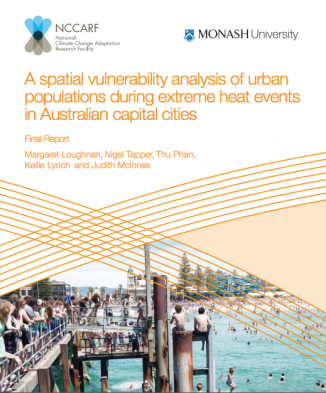A spatial vulnerability analysis of urban populations during extreme heat events in Australian capital cities
Abstract
Extreme heat events pose a risk to the health of all individuals, especially the elderly and the chronically ill, and are associated with an increased demand for healthcare services. In order to address this problem, policy makers’ need information about temperatures above which mortality and morbidity of the exposed population is likely to increase, where the vulnerable groups in the community are located, and how the risks from extreme heat events are likely to change in the future.
This study identified threshold temperatures for all Australian capital cities, developed a spatial index of population vulnerability, and used climate model output to predict changes in the number of days exceeding temperature thresholds in the future, as well as changes in risk related to changes in urban density and an ageing population.
The study has shown that daily maximum and minimum temperatures from the Bureau of Meteorology forecasts can be used to calculate temperature thresholds for heat alert days. The key risk factors related to adverse health outcomes were found to be areas with intense urban heat islands, areas with higher proportions of older people, and areas with ethnic communities.
Maps of spatial vulnerability have been developed to provide information to assist emergency managers, healthcare professionals, and ancillary services develop heatwave preparedness plans at a local scale that target vulnerable groups and address heat-related health risks. The numbers of days exceeding current heat thresholds are predicted to increase over the next 20 to 40 years in all Australian capital cities.
Note: Journal articles and conference papers (and links where available) are available under open access arrangements where possible. Otherwise please contact your institution’s library, the authors, or publishers to organise full access.
